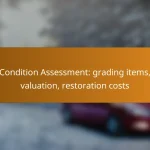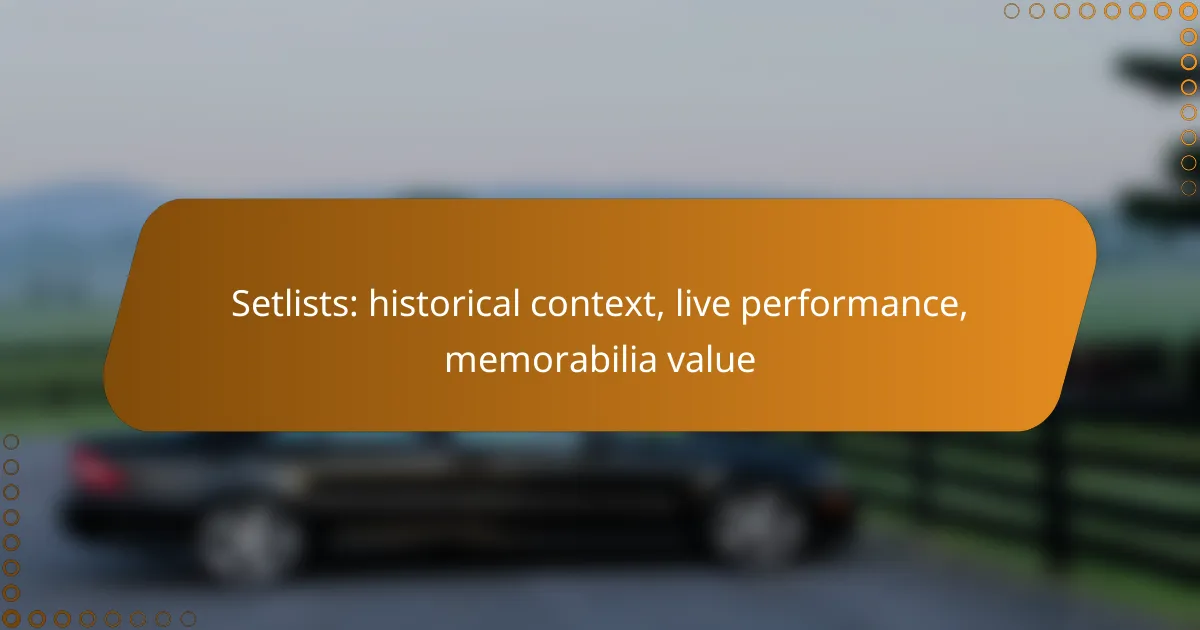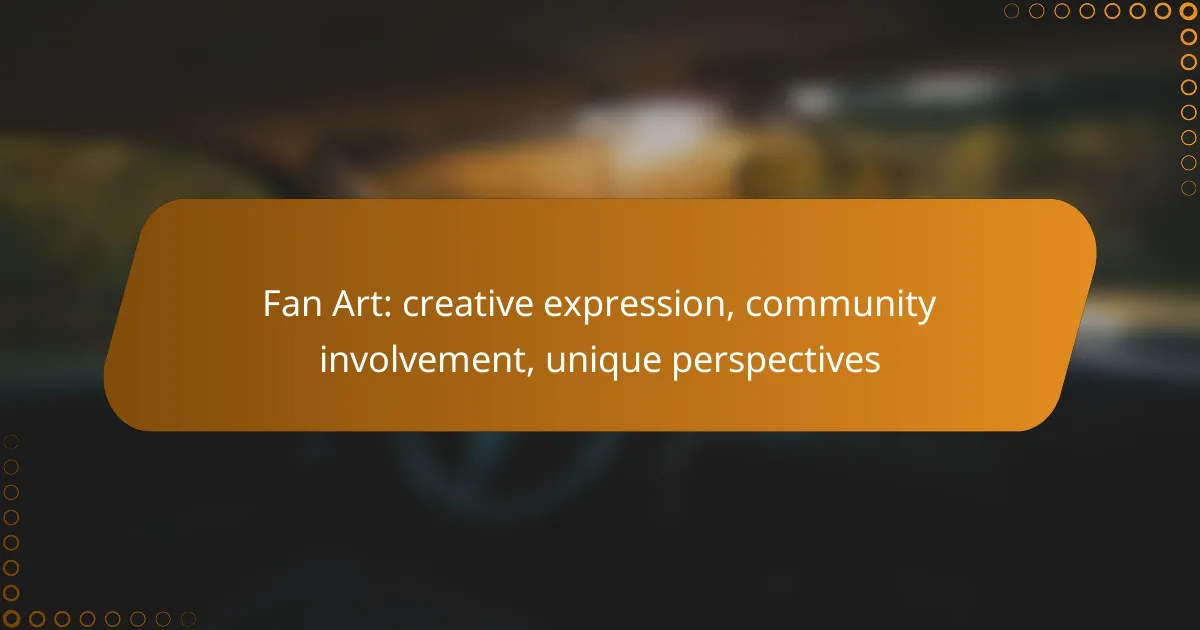Vinyl records have seen a resurgence in popularity, particularly limited editions that boast unique artwork and significant collectible value. These special releases attract both music enthusiasts and art lovers, offering aesthetic enjoyment alongside potential financial rewards. To navigate the market effectively, it’s essential to consider factors such as rarity, demand, and condition when assessing a record’s worth.

Where to find limited edition vinyl records in the UK?
In the UK, limited edition vinyl records can be found in various specialized venues and platforms. These records often feature unique artwork and collectible value, making them sought after by enthusiasts and collectors alike.
Specialty record stores
Specialty record stores are prime locations for discovering limited edition vinyl records. Many of these shops curate their collections to include rare finds and exclusive releases, often featuring unique artwork that enhances their appeal. Look for stores that host events or have knowledgeable staff who can guide you to collectible items.
Some well-known specialty stores in the UK include Rough Trade and Sister Ray, which frequently stock limited editions and exclusive pressings. Visiting these stores regularly can increase your chances of finding sought-after records.
Online marketplaces like Discogs
Online marketplaces such as Discogs are excellent resources for finding limited edition vinyl records. Discogs allows users to buy and sell records, providing a vast selection of rare and collectible items from around the world. You can filter searches by condition, price, and release date to find exactly what you’re looking for.
When using online platforms, always check seller ratings and reviews to ensure a reliable transaction. Additionally, be aware of shipping costs and potential import fees if purchasing from international sellers.
Record fairs and conventions
Record fairs and conventions are fantastic venues to discover limited edition vinyl records in person. These events often feature numerous vendors, providing a wide range of records, including rare and collectible editions. Attending these fairs can also connect you with fellow collectors and enthusiasts.
Keep an eye on local listings for upcoming record fairs in your area, as they can vary in frequency. Bringing cash can be beneficial, as some vendors may not accept card payments. Be prepared to negotiate prices, as many sellers are open to offers on their items.
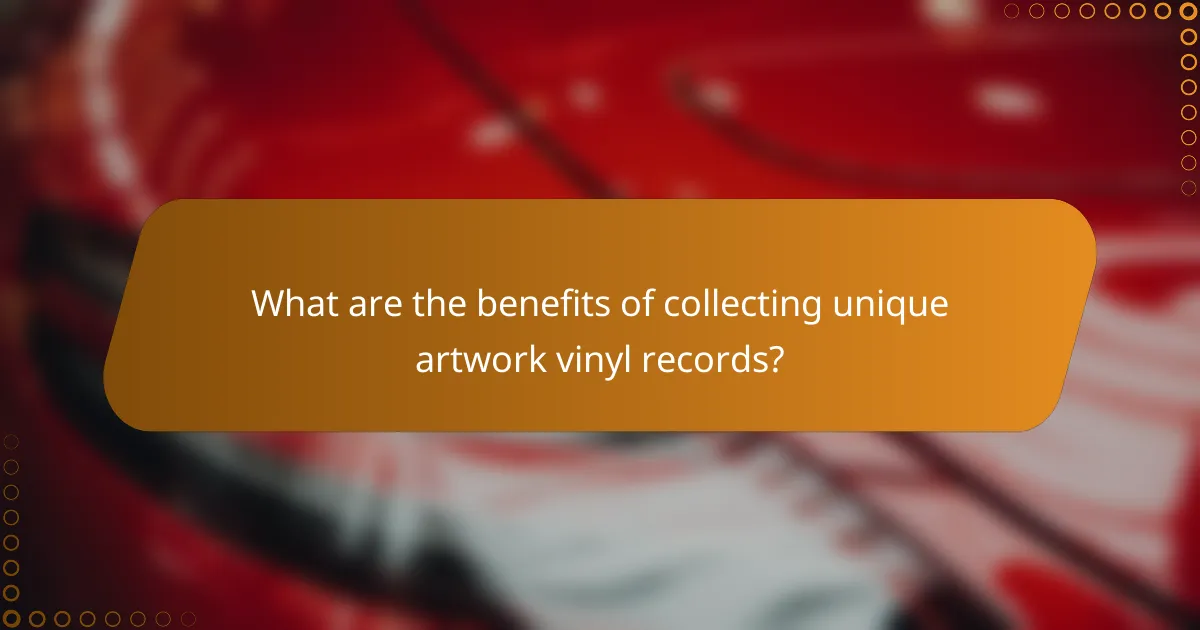
What are the benefits of collecting unique artwork vinyl records?
Collecting unique artwork vinyl records offers aesthetic enjoyment and potential financial rewards. These records often feature limited edition designs, making them appealing to both music lovers and art enthusiasts.
Aesthetic appeal and display value
Unique artwork on vinyl records enhances their visual appeal, turning them into collectible art pieces. Many collectors enjoy displaying these records in their homes, showcasing the vibrant covers that reflect the music’s essence.
When selecting records for display, consider the design quality and how well it complements your space. Limited edition releases often feature intricate artwork that can serve as conversation starters.
Investment potential and resale value
Unique artwork vinyl records can appreciate in value over time, especially if they are limited editions or feature popular artists. The resale market can be lucrative, with some records fetching prices significantly higher than their original retail cost.
To maximize investment potential, focus on records from well-known artists, limited runs, or those with unique packaging. Keep records in excellent condition, as factors like scratches or wear can greatly diminish their resale value.
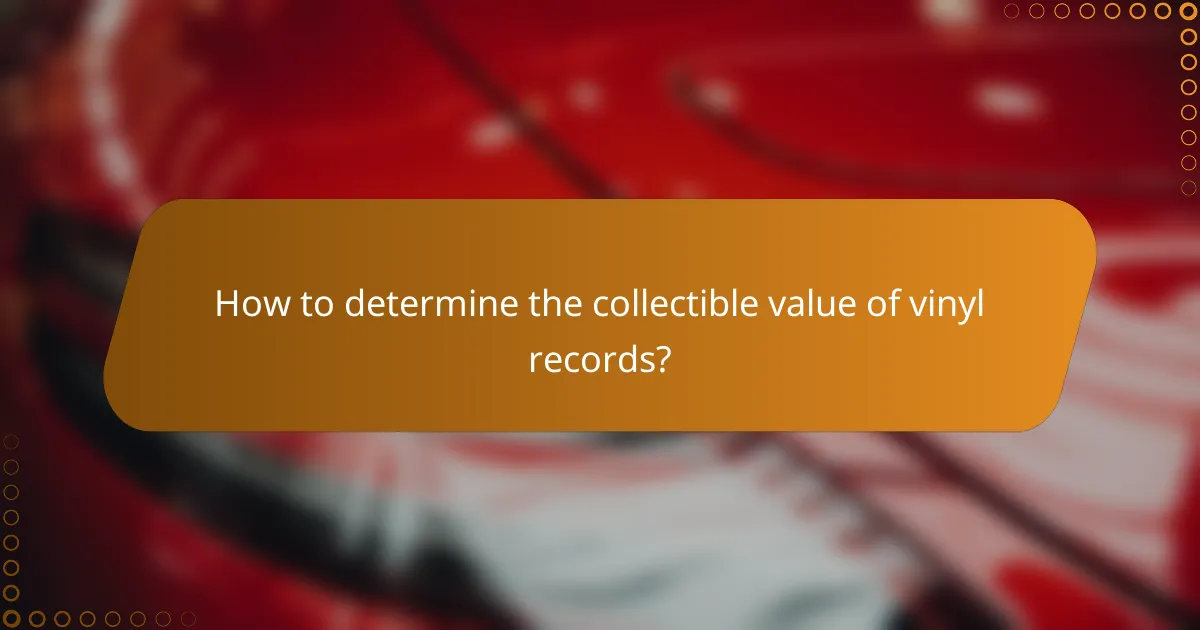
How to determine the collectible value of vinyl records?
To determine the collectible value of vinyl records, assess factors like rarity, demand, and condition. Understanding these elements can help you gauge how much a record might be worth in the market.
Rarity and demand factors
Rarity significantly influences a vinyl record’s collectible value. Limited editions, unique pressings, and records from popular artists tend to be more sought after. Demand can fluctuate based on trends, artist popularity, and cultural significance.
For example, a record pressed in a limited run of a few hundred copies will generally have higher value than a mass-produced album. Keep an eye on fan communities and auction sites to gauge current demand for specific titles.
Condition grading systems
The condition of a vinyl record is crucial for its value. Grading systems typically range from Mint (M) to Poor (P), with several grades in between, such as Near Mint (NM) and Very Good (VG). A record in Mint condition can command a significantly higher price than one rated as Good.
When assessing condition, consider both the vinyl and the cover. Scratches, warps, and wear can diminish value, so always inspect records carefully before purchasing or selling.
Market trends and pricing guides
Market trends can greatly affect vinyl record prices. Regularly consult pricing guides and online marketplaces to stay informed about current values. Websites like Discogs and eBay can provide insights into recent sales and market fluctuations.
Tracking these trends helps collectors make informed buying or selling decisions. Be cautious of overpaying for records that may not hold their value over time, especially if they are part of a temporary trend.

What are the most sought-after limited edition vinyl records?
The most sought-after limited edition vinyl records are typically those that feature unique pressings or exclusive artwork, making them highly collectible. These records often come from iconic artists and can appreciate significantly in value over time, appealing to both music lovers and investors.
Classic albums with unique pressings
Classic albums that have unique pressings are often the crown jewels of any vinyl collection. For instance, records like The Beatles’ “White Album” with specific serial numbers or colored vinyl variants can fetch high prices among collectors. Limited runs, such as those pressed on colored or picture discs, add to their allure and rarity.
When searching for these classic albums, consider factors such as condition, provenance, and whether they include original packaging. Albums that are still sealed or in mint condition will generally command higher prices. Always verify authenticity through reputable sources or marketplaces.
Modern releases with exclusive artwork
Modern vinyl releases often feature exclusive artwork that enhances their collectible value. Many artists collaborate with visual artists to create unique cover designs or limited-edition prints that accompany the vinyl. For example, albums from contemporary artists like Taylor Swift or Billie Eilish frequently include special artwork or bonus tracks that are only available in limited editions.
Collectors should keep an eye on pre-orders and special releases from record labels, as these often sell out quickly. It’s advisable to follow artists on social media or subscribe to newsletters from record stores to stay informed about upcoming limited releases. Additionally, be cautious of counterfeits; always purchase from reputable sellers to ensure authenticity.
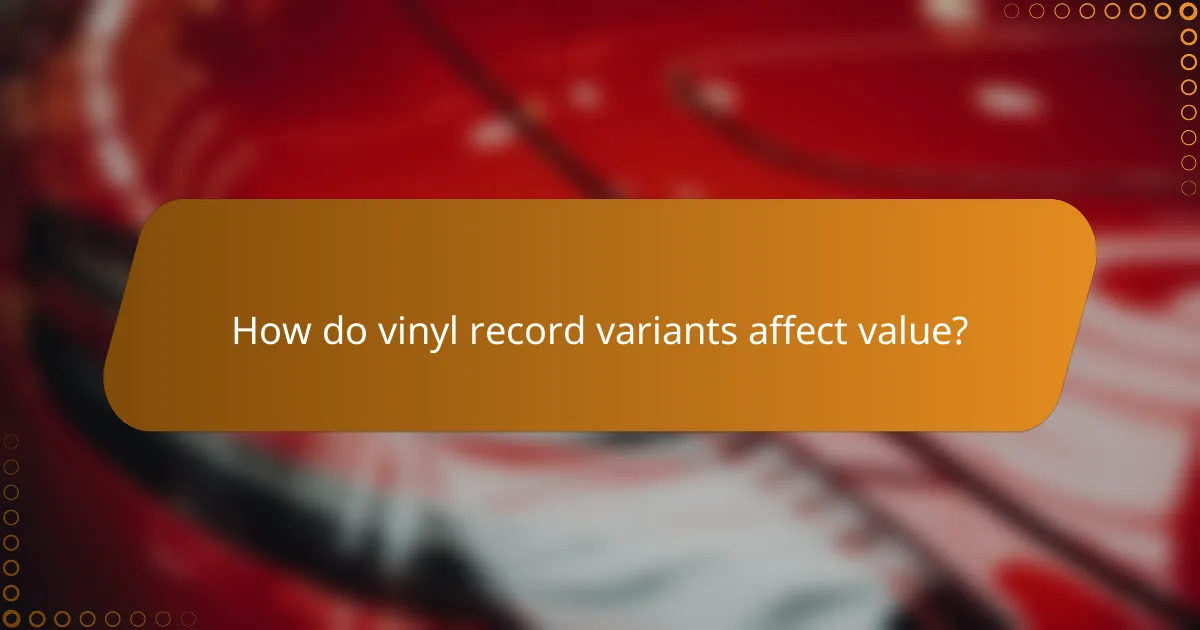
How do vinyl record variants affect value?
Vinyl record variants can significantly influence their collectible value, with factors such as color, packaging, and limited availability playing crucial roles. Collectors often seek unique editions, which can command higher prices due to their rarity and aesthetic appeal.
Color variants and special packaging
Color variants, such as translucent or splatter designs, can make a vinyl record more desirable to collectors. Special packaging, including gatefold covers or unique artwork, enhances the visual appeal and can increase the perceived value. For instance, a limited edition album with a vibrant color and intricate packaging may sell for several times its standard version.
When considering color variants, it’s essential to note that not all colors will appreciate equally. Some colors may be produced in higher quantities, while others are intentionally limited, affecting their market demand. Always research the specific release to understand its rarity.
Limited run pressings and exclusivity
Limited run pressings create a sense of exclusivity that can drive up a record’s value. These editions are often produced in small quantities, making them more sought after by collectors. For example, a pressing limited to 500 copies can fetch a premium price compared to a standard release.
Collectors should be cautious of reissues or unauthorized pressings that may mimic limited editions. Verify the authenticity of a record by checking for specific identifiers, such as catalog numbers or certification from reputable sources. This diligence can help avoid overpaying for a less valuable item.

What criteria should you consider when buying collectible vinyl?
When buying collectible vinyl, consider factors such as authenticity, seller reputation, and return policies. These elements significantly impact the value and enjoyment of your purchase.
Authenticity verification
To ensure the authenticity of collectible vinyl, look for specific indicators such as original packaging, limited edition numbering, and unique artwork. Check for holograms or stamps from reputable manufacturers, which can help confirm legitimacy.
Research the album’s history and provenance, especially for rare editions. Online databases and collector forums can provide insights into verified releases and help you avoid counterfeits.
Seller reputation and return policies
Evaluate the seller’s reputation by checking reviews and ratings on platforms like Discogs or eBay. A reputable seller typically has a history of positive feedback and transparent communication.
Review the return policies before making a purchase. A good return policy allows you to return the item if it does not meet your expectations or if authenticity issues arise. Look for sellers who offer a money-back guarantee or exchanges for defective items.
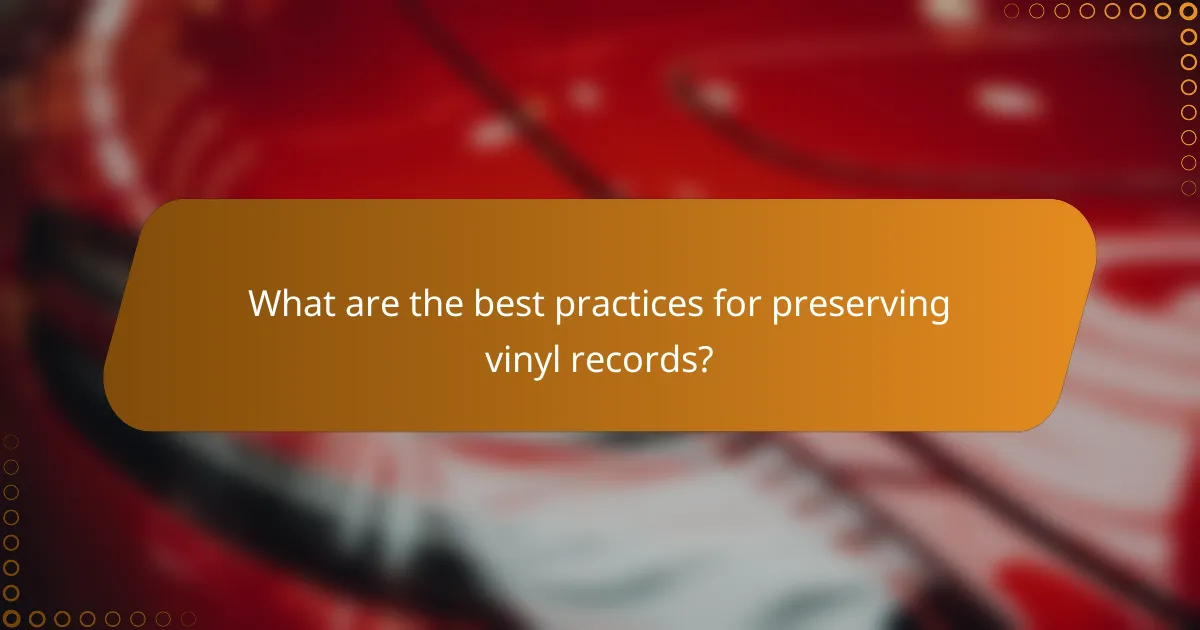
What are the best practices for preserving vinyl records?
To preserve vinyl records, it is essential to focus on proper storage, handling, and cleaning techniques. These practices help maintain sound quality and prevent damage, ensuring your collection remains valuable over time.
Proper storage techniques
Store vinyl records vertically, similar to books on a shelf, to avoid warping. Use sturdy shelving that can support the weight of your collection without bending or sagging. Keep records away from direct sunlight and heat sources, as excessive exposure can cause the vinyl to degrade.
Consider using protective sleeves made of polyethylene or mylar to shield records from dust and scratches. Avoid PVC sleeves, as they can emit harmful chemicals that damage the vinyl. Regularly check your collection for any signs of wear or damage, and replace sleeves as needed.




